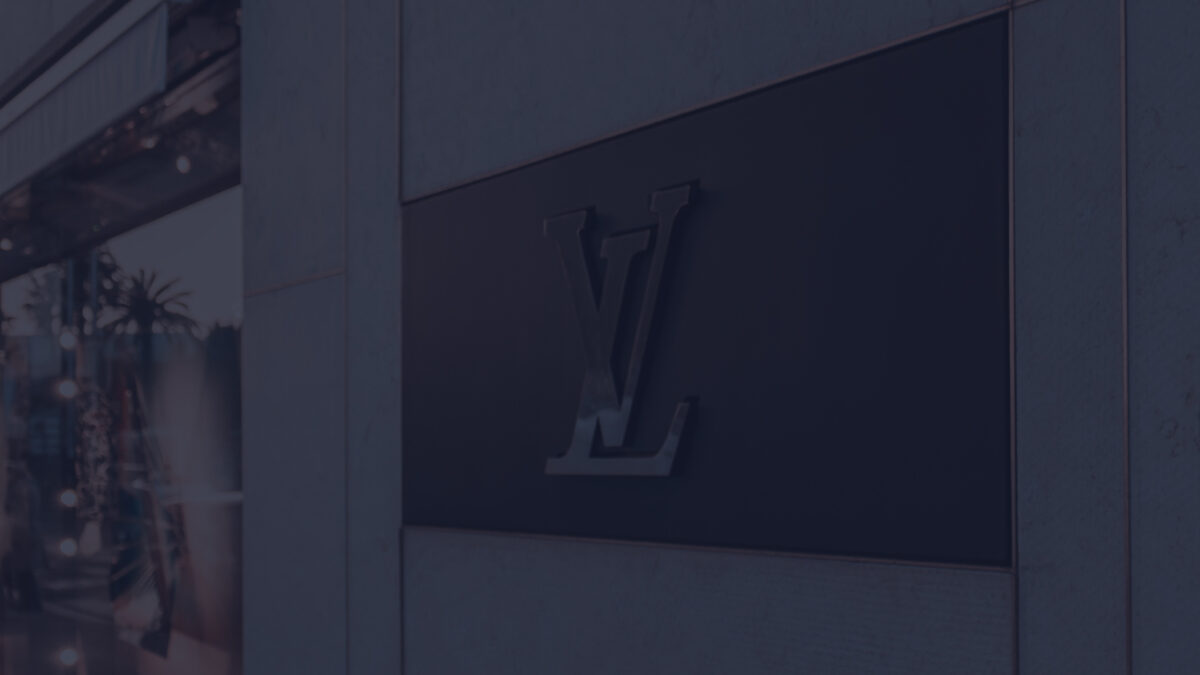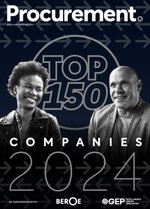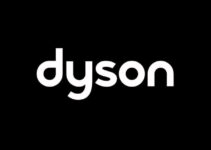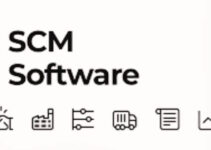

DDMRP in the Supply Chain Fashion Industry: Louis Vuitton Case Study

How does DDMRP Manage Supply Chain Risks and Challenges?

Adaptation of DDMRP for Retail Products on Sale

The sale of fashion products has been a leading driver of the world economy for decades. Led by the likes of French fashion brand Louis Vuitton, one of the most iconic and well-known brands in the world, known for its high-quality luxury products , fashion has become a critical aspect of global trade. The demand for a brand name and designer products has grown steadily over the years, and the desire for consumers to get the latest news before anyone else has increased. However, fashion buyers have been reticent in integrating technology into their supply chain management for a long time.
In recent years, Louis Vuitton has used a new supply chain management system called DDMRP. DDMRP is a demand-driven, inventory-based system that helps to optimize inventory levels and ensure that products are always available to customers. It has been proven to be very effective in the fashion industry, where demand varies significantly from season to season.
What Is DDMRP?
DDMRP stands for Demand Driven Material RequirementPlanning. The next-gen planning and execution strategy strives to regulate a company’s or enterprise’s supply chain. This approach is centered on the preservation and control of critical information flow.
DDMRP is concerned with minimizing changes and absorbing potential supply shortages in the production process. Customer demand constantly drives the supply chain, and shortages are often unavoidable, even in tiny enterprises.
By introducing buffers to the supply stock and changing them as needed, it can regulate replenishment effectively and on schedule by utilizing the demand-driven material needs planning technique (DDMRP).
DDMRP allows businesses to plan their supply chain more flexibly and adaptively, ensuring they have the right amount of stock.
How does DDMRP work?
DDMRP drives supply order creation and management throughout a supply chain by utilizing key decoupling points.
- Strategic decoupling: The only way to eliminate the bullwhip effect, decrease unpredictability, and shorten lead times is to decouple the supply chain.
- Buffer sizing : Buffer sizing acts as a shock absorber, reducing or eliminating supply and demand unpredictability and reducing or eliminating the bullwhip effect.
- Dynamic adjustments: A dynamic adjustment of the buffer profiles calms the supply chain and smooths operation for all variations within a specific time frame.
- Planning based on demand: Demand-driving planning entails producing supply orders based on actual inventory, ordered but unreceived stock, and qualifying sales order demand.
- Visible and collaborative execution: When workers have visibility into inventory through notifications that track consumption, ordering lead times and material delivery may be linked.
Louis Vuitton and DDMRP: Case Study
Louis Vuitton is a leading fashion brand using DDMRP in its supply chain for several years. The main benefits of having DDMRP in place are improved inventory visibility and reduced stockouts. Louis Vuitton has achieved a significant improvement in inventory turnover and a reduction in the amount of stock held at any one time.
This has resulted in a more efficient and streamlined supply chain, which has helped to improve customer service and reduce costs.

How Did Louis Vuitton Implement DDMRP?
You are probably wondering how well Louis Vuitton implemented DDMRP and what benefits they have gained.
Louis Vuitton, in partnership with Anaplan and Bemyapp, organized a Hackathon at an Information Technology School in Paris called Ecole 42. The purpose of the hackathon was to develop a new and better supply chain model so that Louis Vuitton could implement it globally on its supply chain. There were 50 participants in the hackathon divided into ten teams. Each team was provided with dedicated coaches from Louis Vuitton, and support from Anaplan for implementation was also given. The teams had to follow while developing the new supply chain model.
One of the criteria was that the model should be based on DDMRP. This methodology made the supply chain react according to the customers’ demand, and also, they should use Anaplan to develop the model. The team which won the hackathon was Plan!T. Students handled complicated problems such as supply, distribution, and manufacturing . They also dealt with unforeseen circumstances inspired by real-life occurrences, such as monetary swings, factory productivity influenced by a flu pandemic, and increased orders following social media promotions by various fashion fans.
After that, Louis Vuitton started using DDMRP in its supply chain in 2013. The change in the supply chain control was real and visible. They planned buffer stocks and built decoupling points that helped them manage the supply better. Since the implementation of DDMRP, it has seen a number of benefits, including increased inventory accuracy, reduced stockouts, and improved customer service.
DDMRP has allowed Louis Vuitton to become more agile and responsive to changes in the market , and it has helped to improve the flow of information and communication within the company.

What Benefits Has Louis Vuitton Seen Since Implementing DDMRP?
Louis Vuitton has seen significant benefits from using DDMRP in its supply chain. For example, it has reduced inventory levels by 30% while ensuring that products are always available to customers. It has also improved delivery times by up to 50%.
DDMRP has allowed Louis Vuitton to become more agile and responsive to changes in the market, and it has helped to improve the flow of information and communication within the company.
The company has seen a reduction in stockouts and improved customer service. In addition, implementing DDMRP has resulted in a more synchronized supply chain and reduced lead times.

How Can Other Fashion Brands Benefit From DDMRP?
Other brands in the fashion industry can benefit from DDMRP in a few ways.
First, by using DDMRP, brands can improve their forecasting and inventory management. This will help them reduce excess inventory and ensure they have the right amount of stock on hand at all times.
Second, DDMRP can help brands to manage their supplier relationships better. By collaborating with suppliers on forecasting and inventory management, brands can create a more efficient supply chain and improve lead times.
Third, DDMRP can help brands to manage their products more effectively. By planning production and collaborating with suppliers, brands can ensure that they produce the right amount of products at the right time.
Fourth, DDMRP helps to lower order management costs. All the costs are reduced as there is less last-minute, frantic reordering of production. Planners, for example, do not need to spend as much time revising and readjusting the plan (leaving more time to work on things that provide more value to the organization.) Because less expediting is required, material costs and administrative costs like shipping frequently fall.
Fifth, DDMRP helps in maintaining higher margins. When manufacturers have to decrease their prices to obtain business or when overhead expenditures such as the cost of expediting orders grow, margins collapse. DDMRP often allows manufacturers to dramatically reduce lead times, allowing them to compete without lowering pricing. Many have even been able to charge a premium for their services. Furthermore, as previously said, a more predictable, less variable production plan reduces overhead expenses, which can eat into profits.
The Future of Fashion and DDMRP
Looking to the future, it’s clear that fashion businesses need to adopt DDMRP if they want to remain competitive. This innovative methodology has already proven its worth in the supply chain management industry, and there’s no reason why it can’t bring the same success to fashion businesses.
With DDMRP in place, fashion companies will be able to streamline their supply chain, reduce inventory costs, and improve responsiveness to customer demand. So if you have a fashion company in need of a more effective way to streamline your supply chain, start implementing DDMRP today and see the benefits for yourself!
The fashion industry is a cutthroat business. Brands are always looking for ways to set themselves apart from the competition, and one of the best ways to do that is through efficient and effective supply chain management.
Fashion leader Louis Vuitton turned to DDMRP to help them streamline their supply chain. And the results have been impressive. Thanks to DDMRP, Louis Vuitton has been able to reduce inventory levels, improve stock accuracy, and shorten lead times.
So if you’re looking for a way to improve your supply chain management, DDMRP is worth considering.
Interested in knowing how Patrick Rigoni can step up the game of your supply chain? Contact us today and get a free consultation . Patrick Rigoni also offers in-depth DDMRP courses; if you are interested to know more about DDMRP for the supply chain for your company, here is the link to the NEW DDMRP Page.
Related posts

Demand Driven Replenishment: Reducing Lead Times and Costs with DDMRP

How DDMRP Turns Traditional Replenishment into a Competitive Advantage

Best Practices for Using DDMRP to Enhance Cross-Functional Team Collaboration
Comments are closed.

How Louis Vuitton are Sourcing Responsibly with Suppliers

The majority of the raw materials used to produce Louis Vuitton products come from nature, whether they are derived from animal, plant, or mineral sources. By their very nature, these raw materials are not all renewable, but the company is implementing a supply chain and procurement strategy to commit to methods that have a regenerative impact on biodiversity. The company's priorities are to preserve resources and the climate, respect animal welfare, avoid deforestation, eliminate the use of hazardous chemicals, and reduce air and water pollution.
Progress in responsible sourcing strategy
Louis Vuitton is reporting 78% of their raw material are responsibly sourced, which is against a 100% target by 2025, when they are also aiming to have eliminated the use of single use plastic.
As of 2022 statistics, 78% of the materials the company sources comply with responsible sourcing policies, which means they are either certified or recycled under strict environmental standards.
Leather 96% of the leathers used are Leather Working Group-certified (LWG), which is the highest environmental standard in terms of leather tanning. Working alongside its suppliers, the company is constantly researching innovative tanning methods, and have already implemented a water-free process for some leather goods collections.
Wool 99% of sourced wool supplies are traced from the country of origin and nearly 50% come from supply chains with responsible practices. Men's Ready-to-Wear Collections use two 100% Responsible Wool Standard-certified wool yarns, the world reference in terms of respect for the environment and animal welfare.
Feather and down 100% of supplies of feather and down come from a fully integrated supply chain in France, guaranteeing traceability from the breeding farm to the feather processing.
Wood 93% of the wood used in their creations come from sustainably managed forests. 100% of the wood used for the fabrication of trunks and hard-sided boxes have been certified according to the strictest standards for this supply chain.
Cotton 70% of its cotton volumes come from organic supply chains or ones that support the development of more sustainable agricultural practices.
Polyester 44% of the polyester used in its collections is recycled and is currently undergoing the Global Recycled Standard certification process.
Gold 93% of the gold sourced for all its product categories has been certified by the Responsible Jewellery Council (RJC). This certification guarantees that all the steps of the extraction, transformation, and marketing processes respect sustainable development standards. Since 2012, 100% of the gold used in Jewelry Collections is certified by RJC.
Diamonds 100% of the diamonds used in Jewellery Collections are sourced from Responsible Jewellery Council-certified and Kimberley Process-certified suppliers, guaranteeing a “zero conflict” status.
Working with suppliers on responsible sourcing
All procurement partners have signed the LVMH Suppliers Code of Conduct, which defines the ethical, environmental, and social principles for both Louis Vuitton and its supplier ecosystem. Roughly 250 audits are carried out per year and, since 2018, we extended audit scope to include animal welfare and raw material traceability.

Make sure you check out the latest edition of Procurement Magazine and also sign up to our global conference series - Procurement & Supply Chain 2024
**************
Procurement is a BizClik brand
Digital Magazine

- How Estée Lauder is Reducing GHG Across its Value Chain Sustainable Sourcing
- ABB: Using Sustainable Sourcing to Reduce Carbon Footprint Sustainable Sourcing
- Nescafé: Putting Sustainability and Coffee Farmers First Sustainable Sourcing
- L'Oréal's Biotech Venture to Reshape Cosmetics Supply Chain Sustainable Sourcing
Featured Articles
Procurement & supply chain live: sustainability – the agenda.
Everything you need to know ahead of Procurement & Supply Chain LIVE: Sustainability in 2025 – co-located with Sustainability LIVE: Net Zero …
Globality Secures US$47m to Propel AI-Driven Sourcing
AI-powered procurement software leader Globality has raised US$47m in its latest funding round, bringing its total funding to US$356m, as adoption surges …
Why Corporate Sustainability is the Future of Procurement
As investor and consumer focus sharpens on ESG goals, many companies are lagging behind in corporate sustainability efforts …
SAVE THE DATE – Procurement & Supply Chain LIVE Dubai 2025
Save the date – the global p&sc awards 2025, save the date – p&sc live singapore 2025.
- Why Zip was able to Secure US$190m in Series D Funding
- NAIL: A NASA Launch? It's Not What You Think
- ProcurePro Saves 200 Years Of Admin Time In Construction
- SAP Unveils Spend Management Solutions at SAP Spend Connect
- Should CFOs Upgrade ERP or Invest in an S2P Platform?
SCM Insight
Value chain analysis of lvmh.
LVMH (Louis Vuitton Moet Hennessy) is a luxury fashion goods manufacturing French multinational conglomerate. The merger of Moet Hennessy and Louis Vuitton laid the foundation of the conglomerate in 1987. Today, we’ll discuss the value chain analysis of LVMH supply chain analysis; primary and supporting activities in the process of value chain analysis Example Company. They are inbound and outbound logistics, operations, marketing, and customer service; infrastructure, HRM, technology, and procurement as an application of the value chain analysis process.
- Suppliers and Vendors of LVMH
- Chile LTDA LV
- Vietnam Company LV
- Branch of LV Vietnam Co
- Chi NHANH CONG TY TNHH GIONG THUY SAN Vietnam
- MALLETIER LV
- Singapore PTE LV
The Value chain analysis of LVMH supply chain analysis would analyze the primary and supporting activities in the process of value chain analysis. They’re inbound and outbound logistics, operations, marketing, and services; infrastructure, HRM, technology, and procurement. Here’s supply chain analysis of LVMH value chain analysis company example as follows;
Let’s discuss the primary and supporting activities involved in the process of value chain analysis of LVMH supply chain analysis. It is an application of value chain analysis based on Porter’s model; some of the key elements and components of value chain analysis are as follows;

Primary Activities of LVMH
The primary activities are directly involved in the production of products and goods and adding value to the luxury fashion company. Some of the five main primary activities in the value chain analysis of LVMH supply chain analysis are as follows;
Inbound Logistics of LVMH
I-large suppliers network .
LVMH has established a very large supplier network comprising 789 suppliers and vendors in various countries across the world. The large and diverse suppliers’ network ensures the smooth supply of raw materials, components, and supplies for the production of retail fashion apparel and other productions.
II-Responsible Sourcing
According to an estimate, LVMH sources approximately 78% of the raw material responsibly and ethically. The retail luxury fashion brand plans to achieve 100% responsible sourcing by 2025. However, responsible sourcing means that suppliers are complying with strict environmental standards and recycled material. The concentration of various raw supplies and their responsible percentages are as follows;
- Leather 96%
- Feather and Down 100%
- Polyester 44%
- Diamond 100%
III-Suppliers Code of Conduct
LVMH is highly careful about environmental sustainability and social responsibility. In order to regulate suppliers and ensure social and environmental responsibility, the luxury fashion brand has set up a strict code of conduct for suppliers. It comprises of following elements;
- Proper maintenance of the record
- Employees and workers could easily and openly share their feedback without any fear
- Fighting corruption
- Complying with LIFE 360 goals and objectives regulations
- Following the local and social laws
Outbound Logistics of LVMH
I-transportation & logistics .
LVMH partners up and collaborates with various transporters and 3rd party logistics service providers. They transport and distribute raw materials from suppliers to manufacturers; finished fashion products to the distribution centers and logistics facilities, and then to the retail facilities in various countries worldwide.
II-Sustainable Logistics Partners
LVMH carefully selects those transporters and logistics service providers that comply with ISO14001 and Euro6 standards and regulations. The objective is to decrease the greenhouse gasses and carbon emission rate throughout the supply chain and logistics network. However, it allows the luxury retail fashion brand to reduce its carbon impact.
Operations of LVMH
I-production & manufacturing factories .
LVMH has roundabout 118 manufacturing factories for the production of retail luxury fashion products and goods. They produce high-quality luxury fashion products and goods in various categories to keep up with customer demands. However, they receive orders and stylish fashion designs from the creative team of designers and collaborate with them to develop the fashion products accordingly.
II-Warehouses and Distribution Centers
LVMH has established a very large network of warehouses, distribution centers, and logistics centers. They receive finished goods from various production and manufacturing facilities, temporarily store and organize the finished goods, and distribute them to various retail fashion outlets and stores across the world.
Marketing & Sales of LVMH
I-creative storytelling marketing campaign .
LVMH focuses on launching creative storytelling marketing and advertisement campaigns for the promotion of its luxury fashion products and accessories to the end customers. Along with marketing campaigns, the fashion brand conducts art galleries, fashion shows, social events, and celebrating cultural events to connect with customers and promote its products.
II-Retail Fashion Stores
LVMH has established a very large network of over 6100 retail fashion stores and outlets under different brand names in various countries worldwide. They display, market, advertise, promote, and sell the latest fashion products, apparel, and accessories to the end consumers. They all have unique fashion settings, comfortable color schemes, and soothing music inside the store to amplify the overall customer experience.
Services of LVMH
LVMH offers a wide range of luxury fashion products and services to the end customers. They help the company to improve the overall shopping experience of end consumers. However, some of them are as follows;
- E-commerce store
- Home delivery service
- Luxury fashion styles
- Promoting craftsmanship
- Unique customer experience
Supporting Activities of LVMH
Supporting activities are indirectly involved in the production of products and goods and adding value to the luxury fashion company. Some of the main supporting activities in the value chain analysis of LVMH supply chain analysis are as follows;
Infrastructure of LVMH
LVMH has established a large infrastructure of production and manufacturing facilities, a retail network of stores, warehouses, and distribution centers, and a supplier network. Large and well-developed infrastructure helps the retail luxury fashion brand to smoothly perform its various operations and functions and timely deliver the fashion products to the end customers.
HRM of LVMH
LVMH has employed over 213000 employees and workers in various countries worldwide. The human resource management department of the company plays a key role in building a creative working environment, environmental sustainability, social responsibility, and promoting craftsmanship. However, the HRM helps the company to smoothly perform its various operations and comply with social and environmental standards.
Technological Development of LVMH
LVMH invested approximately 140 million USD in research and development. Heavy investment in research helps the retail luxury fashion brand to develop unique fashion designs, improve production and manufacturing methods, and efficient raw materials. As a result, research and technological development help the fashion brand to save costs and efficiently utilize its resources.
Procurement of LVMH
LVMH is highly careful and cautious about ethical sourcing and procurement of raw materials and production supplies for fashion products. In order to ensure the ethical practices of suppliers, LVMH has developed a strict code to regulate and ensure compliance with human rights standards.
Conclusion: LVMH Value Chain Analysis Example Company | Application of Value Chain Analysis Process
After an in-depth study of the value chain analysis of LVMH; we have realized that LVMH is the world’s leading retail luxury fashion brand. If you are learning about the LVMH value chain analysis example company; then you should keep in mind the abovementioned primary and supporting activities. They’re inbound and outbound logistics; operations, marketing and sales, and services; infrastructure, procurement, HRM, and technological development as an application of the value chain analysis process.
Ahsan is an accomplished researcher and has a deep insight in worldly life affairs. He goes Live 3 days a week on various social media platforms. Other than research writing, he’s a very interesting person.
Related Posts

Value Chain Analysis of Lyft

Value Chain Analysis of Dyson

Supply Planning Software – Top 10
Academia.edu no longer supports Internet Explorer.
To browse Academia.edu and the wider internet faster and more securely, please take a few seconds to upgrade your browser .
Enter the email address you signed up with and we'll email you a reset link.
- We're Hiring!
- Help Center

Download Free PDF
A Case Study of Louis Vuitton
Louis Vuitton is the only brand in the world that has no TV commercial, no second product line, no promotion on sales, no free item to give away. Louis Vuitton also has no set of products for sales, no outlet, no license for any other third party. Pricing is the round number only. Since operating the business for 161 years, Louis Vuitton never gives any discount for a promotion.
Related papers
Purpose – “Masstige marketing” is considered as a market penetration strategy for medium and large enterprises, particularly in foreign markets. The author redefine “masstige marketing” strategy in this paper and map the concept as a new model for brand building. Second, the author examine the effectiveness of “masstige marketing” strategy with reference to marketing mix theory (Four Ps ¼ product, price, place and promotion). The purpose of this paper is to introduce a theoretical model to help the companies to implement “masstige marketing” strategy. Design/methodology/approach – The author introduce a scale, called “Masstige Mean Score Scale” to measure the mass prestige value of brands. Both secondary and primary data used in this study. The author collected data from 590 young women consumers living in Japan and France to measure the “masstige” value using the new scale developed. The marketing strategy of European luxury sector multinational brand LV, has also been discussed as a method. Findings – Masstige value is the best indicator of long-term brand value. In other words, higher the masstige value (MMS) of a brand, the higher the likelihood to succeed. The author also found that a brand can create mass prestige with “masstige marketing” strategy by appropriately mixing the four Ps in marketing – Product, Price, Promotion and Place in a distinct and culturally different market. Originality/value – The author develop a pyramid model and measurement scale for “masstige marketing” as a theoretical framework to stimulate further research and as a tool for practitioners for better decision making. Besides, the author posit that higher the Masstige Mean Score (MMS) of a brand, higher the likelihood that potential customers recall that as a “top of mind” brand. Lower MMS implies that the firm has to go long way in their efforts to build the brand. Keywords Brand management, Marketing mix, Brand valuation, Masstige marketing, Mass prestige, Pyramid model, Masstige Mean Score
The present paper compares the luxury consumption in Russia with that in the post-communist countries of the former Soviet bloc. The aim of this research is to find out the common and specific about an attitude to global luxury brands in Russia and Romania. We investigate the motives for buying luxury brands in these two countries, as well as the brands’ preferences for Russian and Romanian consumers. Furthermore, the portrait of an average luxury consumer in Russia and Romania is introduced and analyzed in the study. The current investigation consisted of two parts. First, it was qualitative research, as in-depth interviews with luxury brands consumers. It allowed us to formulate the hypotheses. Then to verify the hypotheses, we conducted on-line survey in which 45 female respondents from each country took part. As can be seen from the study, Russian and Romanian luxury brands connoisseurs have much in common. Both of them prefer global brands to local ones. The majority of Russian respondents agree that luxury brands are bought to demonstrate the status and welfare or at least it is a kind of reward for being hard working. As for Romanians, the key reason for luxury consumption is a very high quality and perfectionism in details. Although the consumers from the countries have shown some common characteristics, they are different in their attitude to Louis Vuitton (LV is not № 1 in Romania). What is more, the brands ratings and products choice are completely different in Russia and Romania. All our respondents have very strong cultural background: they visit opera, museums, listen to classical music and read serious books. Furthermore, their touristic destinations have cultural purposes as well. It means that people appreciate not only material brands, but also try to do their best to follow the cultural life style. This research contributes to some extent to the understanding of luxury brands consumption in Russia and Romania. The study can be useful for luxury companies, which plan to do business in these countries or already have been presented there.
Journal of Natural Language Processing, 2020
Academia Letters, 2021
EFFECT OF GENDER INEQUALITY IN EDUCATION ON ECONOMIC GROWTH IN NIGERIA AND WEST AFRICA, 2019
Arabian Journal for Science and Engineering
JAAL Volume 12, Number 1, 2023
Bebop to the Boolean Boogie, 2003
Journal of Ancient Philosophy, 2016
Journal of Legal Studies, 2016
Ontario Review, 2014
European Heart Journal, 2018
Gaziantep University Journal of Social Sciences, 2017
Molecular Biology of the Cell, 2009
Journal of Raman Spectroscopy, 2015
African Journal of Business Management, 2012
Related topics
- We're Hiring!
- Help Center
- Find new research papers in:
- Health Sciences
- Earth Sciences
- Cognitive Science
- Mathematics
- Computer Science
- Academia ©2024

COMMENTS
DDMRP stands for Demand Driven Material RequirementPlanning.The next-gen planning and execution strategy strives to regulate a company’s or enterprise’s supply chain.This approach is centered on the pr…
A case study based on analysing Louis Vuitton will investigate and examine all aspects of international fashion brand marketing, sustainable branding and look at its significant modern growth from both a European and global perspective.
Louis Vuitton is reporting 78% of their raw material are responsibly sourced, which is against a 100% target by 2025, when they are also aiming to have eliminated the use of single use plastic.
This paper has highlighted Louis Vuitton’s Autumn-Winter 2009 (AW09) and Spring Summer 2010 (SS10) high fashion collections. The company’s supply chain and production processes …
Based on three distinctive yet intercorrelated perspectives of analysis, the study unpacks the bullish potentials of LVMH, its sufficiency in risk control and profit generation, and the...
The case on Luxury goods conglomerate Louis Vuitton Moët Hennessey (LVMH) focuses on three main strategic topics: Management processes; growth and acquisitions; and …
The sale of fashion products has been a leading driver of the world economy for decades. Led by the likes of French fashion brand Louis Vuitton, one of the most iconic and …
The merger of Moet Hennessy and Louis Vuitton laid the foundation of the conglomerate in 1987. Today, we’ll discuss the value chain analysis of LVMH supply chain analysis; primary and supporting activities in the process of …
This needs to be maintained by a balanced supply chain system which merges technical advancements with traditional know-how. Price-high and exclusive LV consistently pursued a luxury pricing strategy where there are high mark-ups …